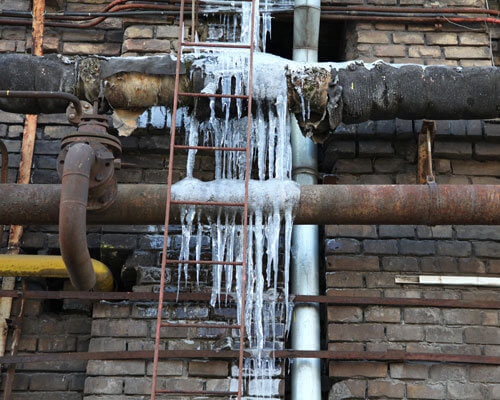Tips to Prevent Frozen Pipes in Cold Weather: Pro Tips
Request ServiceThe author is making a few great points related to Prevent Frozen Pipes in general in the article on the next paragraphs.

Winter can wreak havoc on your pipes, particularly by freezing pipes. Here's just how to stop it from taking place and what to do if it does.
Intro
As temperature levels decline, the risk of icy pipelines increases, possibly leading to expensive fixings and water damages. Recognizing how to avoid frozen pipes is vital for homeowners in cold climates.
Prevention Tips
Protecting prone pipes
Cover pipes in insulation sleeves or make use of warm tape to protect them from freezing temperatures. Concentrate on pipelines in unheated or outside locations of the home.
Heating methods
Maintain interior rooms sufficiently warmed, especially locations with plumbing. Open up cupboard doors to permit warm air to distribute around pipes under sinks.
Exactly how to identify icy pipelines
Search for reduced water circulation from taps, unusual smells or sounds from pipelines, and noticeable frost on subjected pipelines.
Long-Term Solutions
Architectural changes
Consider rerouting pipes away from outside walls or unheated areas. Add added insulation to attic rooms, basements, and crawl spaces.
Upgrading insulation
Buy high-grade insulation for pipes, attic rooms, and walls. Appropriate insulation aids keep constant temperature levels and minimizes the threat of icy pipelines.
Securing Exterior Plumbing
Garden pipes and outdoor taps
Disconnect and drain pipes garden hoses before winter. Mount frost-proof faucets or cover outside faucets with shielded caps.
Recognizing Icy Pipelines
What creates pipes to ice up?
Pipelines ice up when exposed to temperatures listed below 32 ° F (0 ° C) for expanded periods. As water inside the pipelines ices up, it expands, putting pressure on the pipe walls and potentially creating them to burst.
Threats and problems
Icy pipelines can bring about water disturbances, residential property damage, and costly repair services. Burst pipelines can flooding homes and trigger substantial architectural damages.
Indicators of Frozen Pipeline
Determining icy pipes early can prevent them from bursting.
What to Do If Your Pipelines Freeze
Immediate activities to take
If you presume icy pipelines, keep faucets open up to eliminate pressure as the ice melts. Utilize a hairdryer or towels soaked in warm water to thaw pipelines gradually.
Verdict
Avoiding frozen pipes requires positive actions and fast feedbacks. By recognizing the causes, signs, and safety nets, property owners can protect their pipes throughout cold weather.
6 Proven Ways to Prevent Frozen Pipes and Protect Your Home
Disconnect and Drain Garden Hoses
Before winter arrives, start by disconnecting your garden hoses and draining any remaining water. Close the shut-off valves that supply outdoor hose bibs and leave the outdoor faucet open to allow any residual water to drain. For extra protection, consider using faucet covers throughout the colder months. It’s also important to drain water from any sprinkler supply lines following the manufacturer’s directions.
Insulate Exposed Pipes
Insulating your pipes is an effective way to prevent freezing. Pipe insulation is readily available at home improvement stores and is relatively inexpensive. Pay close attention to pipes in unheated areas such as the attic, basement, crawl spaces, or garage. Apply foam insulation generously to create a buffer against the cold. You can also wrap your pipes in heat tape or thermostat-controlled heat cables for added warmth.
Seal Air Leaks
Inspect your home for any cracks or openings that could let in cold air. Seal any holes around the piping in interior or exterior walls, as well as the sill plates where your home rests on its foundation. Additionally, make sure to keep your garage door closed unless you’re entering or exiting. Leaving it open creates a significant air leak that can lead to frozen pipes.
Allow Warm Air Circulation
During cold snaps, it’s essential to allow warm air to circulate evenly throughout your home. Leave interior doors ajar to promote better airflow. Open kitchen and bathroom cabinets to help distribute heat consistently around the rooms. If you have small children or pets, be sure to remove any household chemicals or potentially harmful cleaners from open cabinets for safety.
Let Faucets Drip
A small trickle of water can make a big difference in preventing ice formation inside your pipes. When temperatures drop significantly, start a drip of water from all faucets served by exposed pipes. This continuous flow helps prevent the water from freezing. Additionally, running a few faucets slightly can relieve pressure inside the pipes, reducing the chances of a rupture if the water inside does freeze.
https://choateshvac.com/6-proven-ways-to-prevent-frozen-pipes-and-protect-your-home/

As a serious person who reads about How to prepare your home plumbing for winter weather, I imagined sharing that piece of content was a great idea. If you liked our page if you please be sure to pass it around. We truly appreciate reading our article about Prevent Frozen Pipes .
Click Here